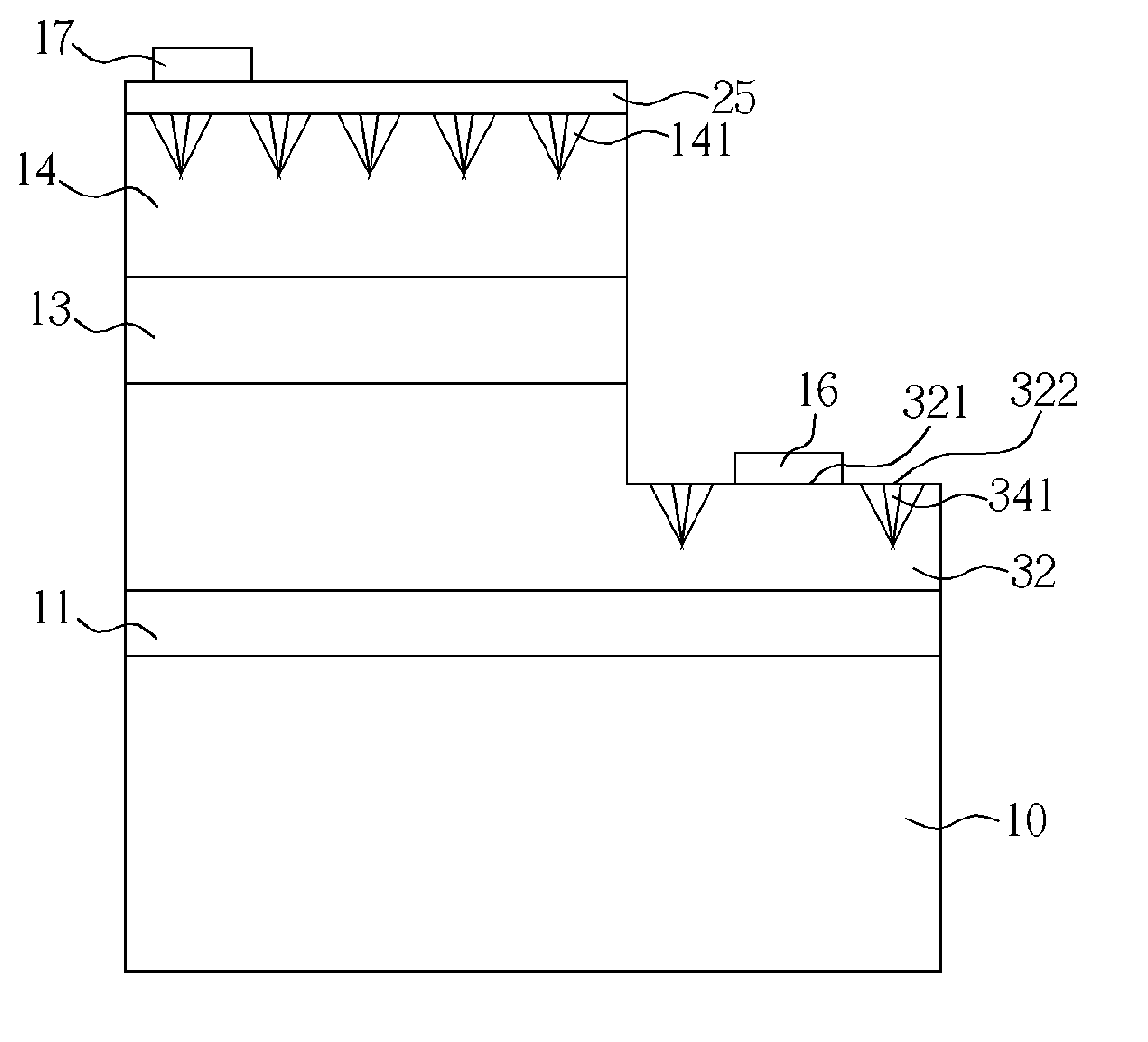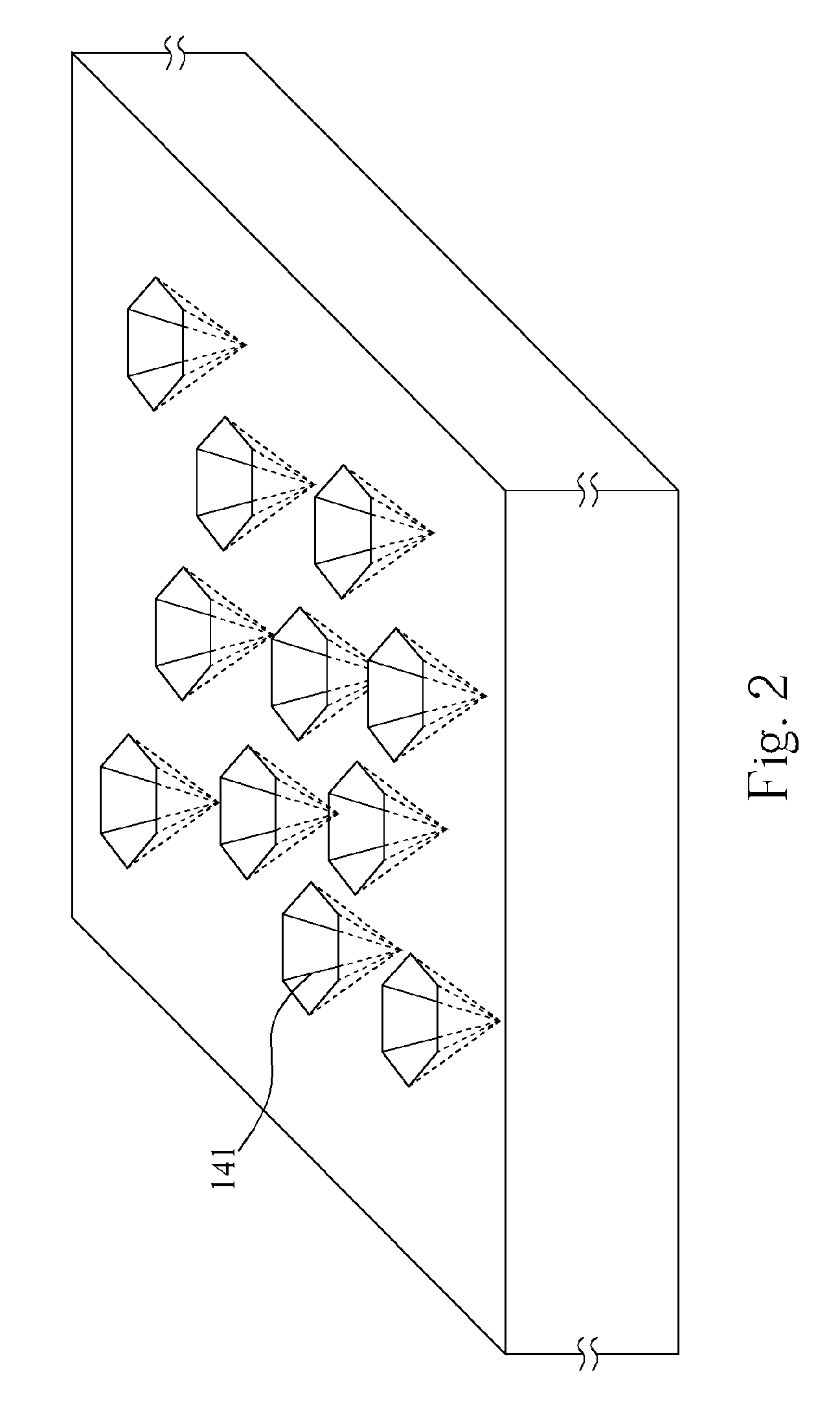High-efficiency light-emitting element
a light-emitting element, high-efficiency technology, applied in the direction of semiconductor laser structure details, electrical equipment, semiconductor devices, etc., can solve the problems of increasing both the difficulty of the led process and the cost, and reducing the light transmission distance. , the effect of increasing the total light-emitting area
- Summary
- Abstract
- Description
- Claims
- Application Information
AI Technical Summary
Benefits of technology
Problems solved by technology
Method used
Image
Examples
embodiment 1
[0020]Please refer to FIG. 1. FIG. 1 is a diagram of a high-efficiency light-emitting element 1 according to a first embodiment of the present invention. The high-efficiency light-emitting element 1 includes a sapphire substrate 10, a nitride buffer layer 11 formed on the sapphire substrate 10, and a n-type nitride semiconductor layer 12 formed on the nitride buffer layer 11. The n-type nitride semiconductor layer 12 includes a first surface and a second surface distant from the nitride buffer layer 11. The high-efficiency light-emitting element 1 further includes a nitride multiple-quantum well light-emitting layer 13 formed on the first surface, and a p-type nitride semiconductor layer 14 formed on the nitride multiple-quantum well light-emitting layer 13. The p-type nitride semiconductor layer 14 includes a plurality of hexagonal-pyramid cavities 141 on the surface and a distance from the nitride multiple-quantum well light-emitting layer 13, wherein the hexagonal-pyramid cavity ...
embodiment 2
[0022]The configuration of embodiment 2 is similar to embodiment 1, and the difference between embodiment 1 and embodiment 2 is as follows, the initial layers of the hexagonal-pyramid cavities 141 grow between the epitaxial temperature 700° C. and 950° C. for changing the crystal nucleation so as to form the hexagonal-pyramid cavities 141 on the surface of the p-type nitride semiconductor layer 14 or inside the p-type nitride semiconductor layer 14. The variation of the epitaxial growth temperature and the heating or cooling can determine the size and the density of the plurality of hexagonal-pyramid cavities 141 so as to change the light-emitting efficiency.
embodiment 3
[0023]The configuration of embodiment 3 is similar to embodiment 1, and the difference between embodiment 1 and embodiment 3 is as follows, the p-type nitride semiconductor layer is grown in a nitrogen rich environment for changing the crystal nucleation so as to form the hexagonal-pyramid cavities 141 on the surface of the p-type nitride semiconductor layer 14 or inside the p-type nitride semiconductor layer 14. The modulation of the epitaxial growth environment and the proportion of the nitrogen, hydrogen, and nitrogen source can determine the size and the density of the plurality of hexagonal-pyramid cavities 141 so as to change the light-emitting efficiency.
PUM
 Login to View More
Login to View More Abstract
Description
Claims
Application Information
 Login to View More
Login to View More - R&D
- Intellectual Property
- Life Sciences
- Materials
- Tech Scout
- Unparalleled Data Quality
- Higher Quality Content
- 60% Fewer Hallucinations
Browse by: Latest US Patents, China's latest patents, Technical Efficacy Thesaurus, Application Domain, Technology Topic, Popular Technical Reports.
© 2025 PatSnap. All rights reserved.Legal|Privacy policy|Modern Slavery Act Transparency Statement|Sitemap|About US| Contact US: help@patsnap.com



